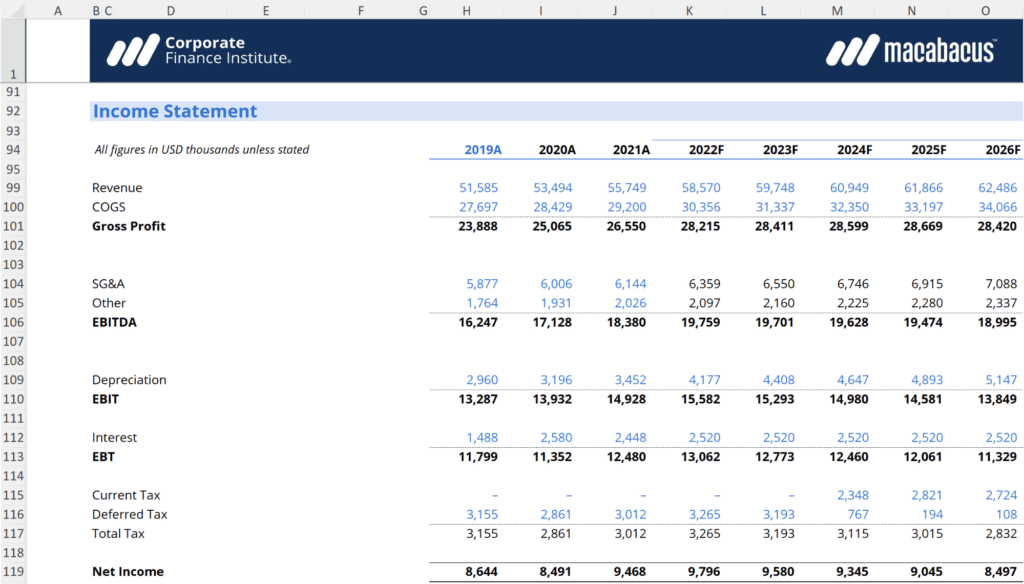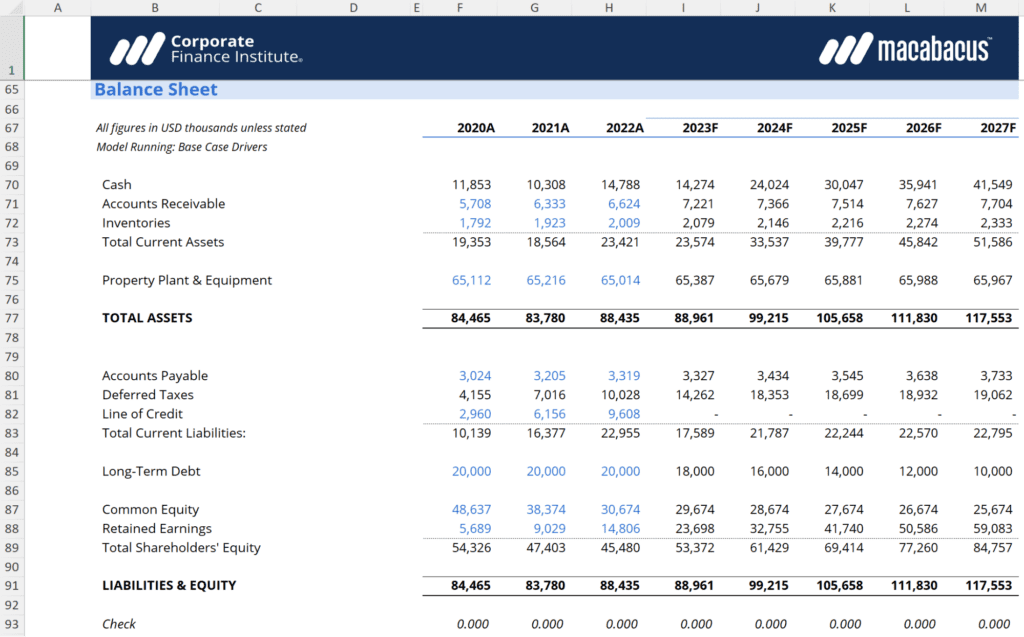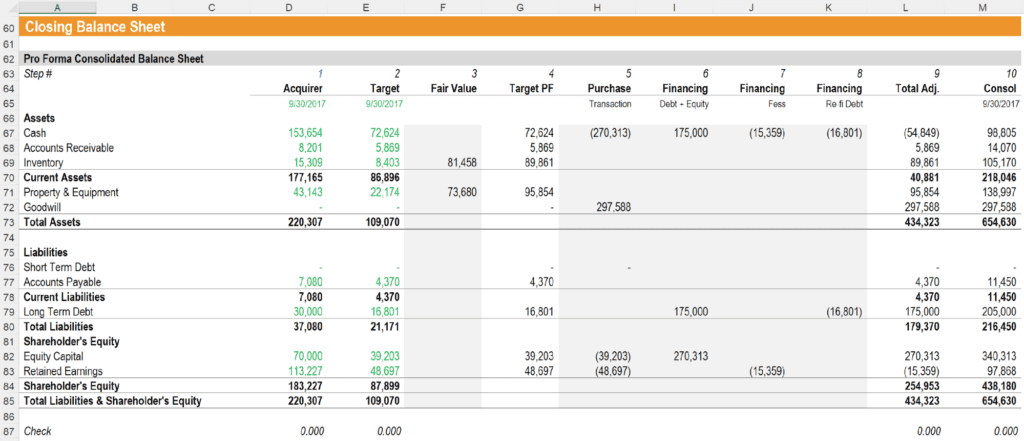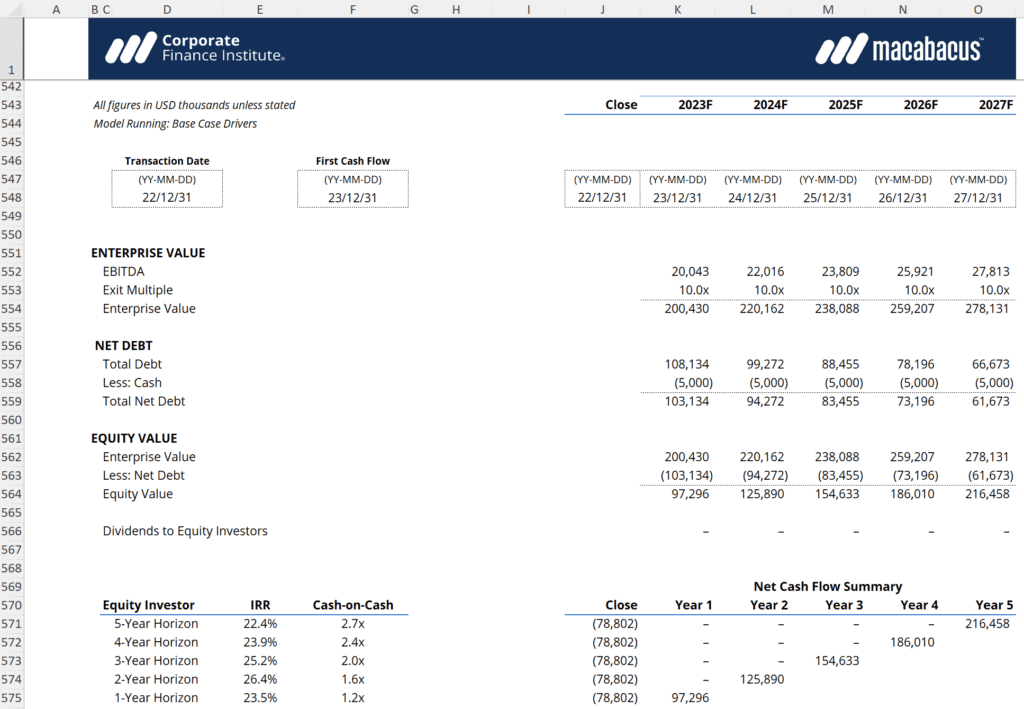Types of Financial Models
The 10 most common types of financial models
Over 1.8 million professionals use CFI to learn accounting, financial analysis, modeling and more. Start with a free account to explore 20+ always-free courses and hundreds of finance templates and cheat sheets.
Top 10 Types of Financial Models
There are many different types of financial models. In this guide, we will outline the top ten most common models used in corporate finance by financial modeling professionals.
Here is a list of the ten most common types of financial models:
- Three-Statement Model
- Discounted Cash Flow (DCF) Model
- Merger Model (M&A)
- Initial Public Offering (IPO) Model
- Leveraged Buyout (LBO) Model
- Sum of the Parts Model
- Consolidation Model
- Budget Model
- Forecasting Model
- Option Pricing Model
Key Highlights
- The ten most common financial models are used by investment bankers, research analysts, private equity professionals and other corporate finance professionals.
- You can download many of our pre-built templates to upskill your financial modeling capabilities.
- The key to being able to model effectively is to have good templates and a solid understanding of accounting and corporate finance.

Examples of Financial Models
To learn more about each of the types of financial models and to perform detailed financial analysis, we have laid out detailed descriptions with relevant screenshots below. The key to being able to model effectively is to have good templates and a solid understanding of corporate finance, as covered in our courses.

If you’d like to have the templates, you can always download our financial models.
1. Three-Statement Model
The three-statement model is the most basic setup for financial modeling. As the name implies, the three statements (income statement, balance sheet, and cash flow) are all dynamically linked with formulas in Excel. The objective is to set it up so all the accounts are connected and a set of assumptions can drive changes in the entire model. It’s important to know how to link the three financial statements, which requires a solid foundation of accounting, finance and Excel skills. Learn the foundations in our online financial modeling courses.
Here is a screenshot of the balance sheet section of a three-statement single worksheet model. Each of the other sections can easily be expanded or contracted to view sections of the model independently. See our free webinar on how to build a three-statement model.

Learn more: Download CFI’s three-statement financial model.
2. Discounted Cash Flow (DCF) Model
The DCF model builds on the three-statement model to value a company based on the Net Present Value (NPV) of the business’s future cash flow. The DCF model takes the cash flows from the three-statement model, makes some adjustments where necessary, and then uses the XNPV function in Excel to discount the cash flows back to today at the company’s Weighted Average Cost of Capital (WACC).
These types of financial models are used in equity research and other areas of the capital markets.
Here is a screenshot of the discounting cash flows section in a DCF model. In this section, the cash flows that were calculated above are being discounted by the calculated WACC. See our guide to DCF models.

Learn more: Download the DCF model template.
3. Merger Model (M&A)
The M&A model is a more advanced model used to evaluate the pro forma accretion/dilution of a merger or acquisition. It’s common to use a single tab model for each company, where the consolidation of Company A + Company B = Merged Co. The level of complexity can vary widely. This model is most commonly used in investment banking and/or corporate development.
Here is an example of an M&A model used to evaluate the impact of an acquisition. The M&A model is a more advanced type of financial model, as it requires making adjustments to create a Pro Forma closing balance sheet, incorporate synergies and terms of the deal, and modeling accretion/dilution, as well as performing sensitivity analysis, and determining the expected impact on valuation.

Learn to build an M&A model step by step in CFI’s M&A Modeling Course.
4. Initial Public Offering (IPO) Model
Investment bankers and corporate development professionals also build IPO models in Excel to value their business in advance of going public. These models involve looking at comparable company analysis in conjunction with an assumption about how much investors would be willing to pay for the company in question. The valuation in an IPO model includes “an IPO discount” to ensure the stock trades well in the secondary market.
5. Leveraged Buyout (LBO) Model
A leveraged buyout transaction typically requires modeling complicated debt schedules and is an advanced form of financial modeling. An LBO is often one of the most detailed and challenging of all types of financial models, as the many layers of financing create circular references and require cash flow waterfalls. These types of models are not very common outside of private equity or investment banking.
Here is an example of an LBO model. As you see below, the LBO transactions require a specific type of financial model that focuses heavily on the company’s capital structure and leverage to enhance equity returns. Learn more about LBO transactions and LBO models.

Learn more: CFI’s LBO Modeling Course.
6. Sum of the Parts Model
This type of model is built by taking several DCF models and adding them together. Next, any additional components of the business that might not be suitable for a DCF analysis (e.g., marketable securities, which would be valued based on the market) are added to that value of the business. So, for example, you would sum up (hence “sum of the parts”) the value of business unit A, business unit B, and investments C, minus liabilities D to arrive at the Net Asset Value for the company.
7. Consolidation Model
This type of model includes multiple business units added into one single model. Typically, each business unit has its own tab, with a consolidation tab that simply sums up the other business units. This is similar to a Sum of the Parts exercise where Division A and Division B are added together and a new, consolidated worksheet is created. Check out CFI’s free consolidation model template.
8. Budget Model
This is used to model finance for professionals in financial planning & analysis (FP&A) to get the budget together for the coming year(s). Budget models are typically designed to be based on monthly or quarterly figures and focus heavily on the income statement.
9. Forecasting Model
This type is also used in financial planning and analysis (FP&A) to build a forecast that compares to the budget model. Sometimes the budget and forecast models are one combined workbook and sometimes they are totally separate.
Learn more: See a step-by-step demonstration of how to build a forecast model.
10. Option Pricing Model
The two main types of option pricing models are binomial tree and Black-Scholes. These models are based purely on mathematical formulas rather than subjective criteria and, therefore, are more or less a straightforward calculator built into Excel.
Related Articles
- Financial Modeling for Dummies
- Financial Modeling Time-Lapse
- Excel Shortcuts
- Why Investment Banking?
- Top Financial Modeling Courses
- DCF Model Infographic
- See all financial modeling resources
To find out more about finance careers, check out our interactive Career Map.
Analyst Certification FMVA® Program
Below is a break down of subject weightings in the FMVA® financial analyst program. As you can see there is a heavy focus on financial modeling, finance, Excel, business valuation, budgeting/forecasting, PowerPoint presentations, accounting and business strategy.
A well rounded financial analyst possesses all of the above skills!
Additional Questions & Answers
CFI is the global institution behind the financial modeling and valuation analyst FMVA® Designation. CFI is on a mission to enable anyone to be a great financial analyst and have a great career path. In order to help you advance your career, CFI has compiled many resources to assist you along the path.
In order to become a great financial analyst, here are some more questions and answers for you to discover:
- What is Financial Modeling?
- How Do You Build a DCF Model?
- What is Sensitivity Analysis?
- How Do You Value a Business?
Create a free account to unlock this Template
Access and download collection of free Templates to help power your productivity and performance.
Already have an account? Log in
Supercharge your skills with Premium Templates
Take your learning and productivity to the next level with our Premium Templates.
Upgrading to a paid membership gives you access to our extensive collection of plug-and-play Templates designed to power your performance—as well as CFI's full course catalog and accredited Certification Programs.
Already have a Self-Study or Full-Immersion membership? Log in
Access Exclusive Templates
Gain unlimited access to more than 250 productivity Templates, CFI's full course catalog and accredited Certification Programs, hundreds of resources, expert reviews and support, the chance to work with real-world finance and research tools, and more.
Already have a Full-Immersion membership? Log in






